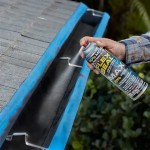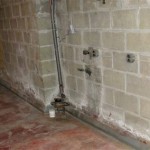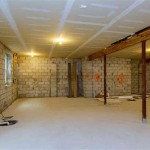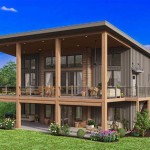How To Make A Temporary Room In Basement
Creating a temporary room in a basement can be a practical solution for a variety of needs, such as accommodating guests, providing a quiet workspace, or offering a temporary living space during home renovations. This approach allows for flexibility without committing to permanent construction. Careful planning and execution are crucial to ensure the space is comfortable, safe, and compliant with local building codes where applicable. This article outlines the steps involved in transforming a portion of your basement into a functional and temporary room.
Before embarking on this project, it is essential to assess the basement environment. Basements are prone to moisture and humidity issues. Addressing these problems preemptively is paramount to creating a habitable and comfortable space. Consider using a dehumidifier to maintain optimal humidity levels. Inspect the walls and floor for any signs of water damage or leaks. Repairing any existing issues is critical before proceeding with the build-out. Proper ventilation is also crucial. Ensure adequate airflow to prevent the build-up of stale air and potential mold growth. A combination of natural ventilation (if possible) and mechanical ventilation (such as a fan or air purifier) will contribute to a healthier indoor environment.
Furthermore, it is important to understand local building codes and regulations. While creating a temporary space may not always require permits, it is prudent to check with your local building department. Some jurisdictions have specific requirements regarding egress windows, smoke detectors, and minimum ceiling heights for habitable spaces. Adhering to these regulations will ensure safety and prevent potential legal issues down the line.
Defining the Space
The first step in creating a temporary room is to define the physical boundaries of the space. Several options exist, each with varying degrees of permanence and cost. The choice will depend on individual needs, budget, and desired level of privacy.
One approach is to use temporary walls or room dividers. These are often lightweight and easy to assemble, providing a visual barrier without requiring significant construction. Options include fabric screens, folding partitions, and freestanding panels. These dividers are available in various styles and materials, allowing one to customize the look and feel of the space. They are relatively inexpensive and can be easily moved or disassembled when the temporary room is no longer needed.
Another option is to use curtains or drapes to delineate the space. This is a particularly cost-effective and flexible solution. Curtains can be hung from a track system or tension rods, providing a visual separation while still allowing light and air to circulate. They can also be easily removed or changed to alter the appearance of the space. Choosing blackout curtains can provide additional privacy and block out unwanted light.
Bookshelves or storage units can also serve as effective room dividers. These provide both storage and visual separation, making them a practical and functional choice. Arrange bookshelves strategically to create a defined boundary. Consider the height and depth of the shelves to ensure adequate privacy and stability. Heavier items should be placed on the bottom shelves to prevent tipping. This approach not only creates a temporary room but also adds valuable storage space to the basement.
When defining the space, consider the placement of doors and windows. Ensure that the temporary walls or dividers do not obstruct access to exits or natural light sources. Maintaining adequate egress is crucial for safety, especially in case of emergencies. If possible, position the temporary room near a window to take advantage of natural light and ventilation.
Ensuring Comfort and Functionality
Once the space is defined, it is crucial to address the comfort and functionality of the temporary room. This includes addressing issues such as flooring, lighting, and climate control.
Basement floors are often cold and hard, making them uncomfortable for extended use. Covering the floor with rugs or carpets can significantly improve comfort and warmth. Area rugs are a good option for temporary spaces as they are easy to move and clean. Larger rugs that cover a significant portion of the floor will provide better insulation and sound absorption. Consider using carpet tiles, which are easy to install and replace if damaged. These tiles provide a more finished look than bare concrete and can be customized to fit the specific dimensions of the space.
Adequate lighting is essential for creating a comfortable and functional space. Basements often lack natural light, so it is important to supplement it with artificial lighting. Consider using a combination of ambient, task, and accent lighting to create a well-lit and inviting environment. Ambient lighting provides overall illumination, while task lighting focuses on specific areas, such as a desk or reading chair. Accent lighting can be used to highlight architectural features or artwork. Portable lamps, such as table lamps and floor lamps, are a good option for temporary rooms as they can be easily moved and adjusted. String lights can also add a warm and festive touch to the space.
Climate control is another important consideration, especially in basements. As mentioned earlier, humidity can be a major issue. Using a dehumidifier can help to maintain a comfortable and healthy environment. In addition, consider using a portable heater or air conditioner to regulate the temperature. A fan can also improve air circulation and prevent the build-up of stale air. Insulating the walls and ceiling can help to improve energy efficiency and reduce drafts. Temporary insulation options include using blankets or tapestries to cover the walls. These can provide a minimal amount of insulation and improve the overall comfort of the space.
Furniture selection is also crucial for creating a functional and comfortable temporary room. Choose furniture that is appropriate for the intended use of the space. If the room is intended as a guest bedroom, a comfortable bed and bedside table are essential. If it is intended as a workspace, a desk, chair, and storage unit are necessary. Consider using lightweight and portable furniture that can be easily moved or disassembled when the temporary room is no longer needed. Inflatable furniture is a good option for temporary spaces as it is easy to store and transport.
Safety Considerations
Safety should be a top priority when creating a temporary room in the basement. Ensure that the space is safe and free from hazards. This includes addressing issues such as fire safety, electrical safety, and air quality.
Fire safety is paramount. Install smoke detectors in the temporary room and ensure that they are in good working order. Test the smoke detectors regularly to ensure that they are functioning properly. Provide a fire extinguisher in the basement and make sure that everyone knows how to use it. Have a clear escape plan in case of a fire. Ensure that the temporary walls or dividers do not obstruct access to exits. Keep flammable materials away from heat sources. Consider using fire-resistant materials for the temporary walls and dividers.
Electrical safety is another important consideration. Inspect all electrical outlets and wiring in the basement to ensure that they are in good condition. Avoid overloading electrical circuits. Use surge protectors to protect electronic equipment from power surges. Do not run extension cords under rugs or carpets, as this can create a fire hazard. If necessary, hire a qualified electrician to install additional outlets or wiring.
Air quality is also crucial for safety. As mentioned earlier, basements are prone to moisture and mold growth. Ensure that the basement is well-ventilated to prevent the build-up of stale air and mold. Use a dehumidifier to maintain optimal humidity levels. Inspect the walls and floor for any signs of mold or water damage. If mold is present, remove it immediately using appropriate cleaning solutions. Consider using an air purifier to improve air quality. If using a space heater, ensure that it is properly ventilated to prevent the build-up of carbon monoxide.
In addition to these safety considerations, it is also important to address any potential tripping hazards. Make sure that all cords and cables are properly secured and out of the way. Use rugs with non-slip backing to prevent falls. Provide adequate lighting to illuminate the space and prevent accidents. Keep the space clean and free from clutter. Regularly inspect the temporary room for any potential hazards and address them promptly.
By following these steps, it is possible to create a comfortable, functional, and safe temporary room in your basement. Remember to prioritize safety and address any potential hazards before proceeding. With careful planning and execution, the temporary room can provide a valuable and flexible space for a variety of needs.

Unfinished Basement Guest Bedroom Emily S Project List

Unfinished Basement Guest Bedroom Emily S Project List

How To Build A Temporary Wall Youtube

Building A Temporary Room In 5 Minutes Time Lapse Youtube

56 Awesome Temporary Room Partitions Wall Dividers Design Freestanding Divider Hanging Curtain

Temporary Solution To Unfinished Basement Could Be Good Way Hide The Cinder Block Walls

Dark And Neglected Basement Gets A Temporary Makeover To Become An Inspiring Creative Space Youtube

10 Affordable Unfinished Basement Ideas Building Bluebird

My First Unfinished Basement Diy Project Remodeling Walls Makeover

How To Build A Private Room With Temporary Wall This Diy Can Be An Office Bedroom Etc Youtube







